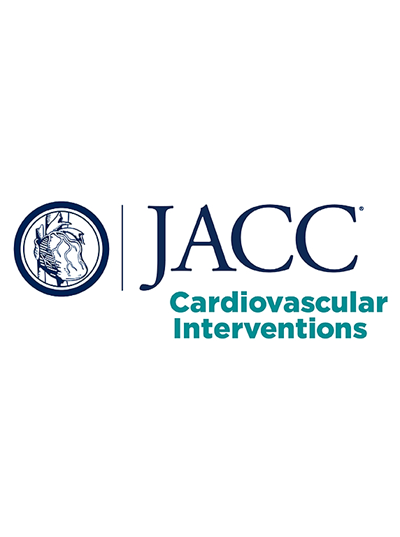Intravascular Ultrasound-Guided vs Angiography-Guided Drug-Coated Balloon Angioplasty in Patients With Complex Femoropopliteal Artery Disease
IF 11.7
1区 医学
Q1 CARDIAC & CARDIOVASCULAR SYSTEMS
引用次数: 0
Abstract
Background
Intravascular ultrasound (IVUS) guidance has been shown to yield favorable outcomes for endovascular treatment of femoropopliteal artery (FPA) disease with drug-coated balloon (DCB) angioplasty. However, the specific benefits of IVUS for treatment of complex FPA lesions remain uncertain.
Objectives
In this study, the authors compared the clinical impact of IVUS-guided vs angiography-guided DCB angioplasty in patients with complex or noncomplex FPA lesions.
Methods
This study was a prespecified, primary subgroup analysis of the randomized IVUS-DCB trial. Patients with FPA undergoing DCB angioplasty were randomized to receive the procedure under IVUS or angiography guidance. The primary endpoint was 12-month primary patency; secondary endpoints included clinically driven target lesion revascularization (CD-TLR), sustained clinical improvement, and hemodynamic improvement.
Results
Among the 237 patients enrolled, 158 had complex FPA (Trans-Atlantic Inter-Society Consensus II [TASC II] type C/D), and 79 had noncomplex FPA (TASC II type A/B). In complex FPA, IVUS guidance was associated with significantly higher rates of primary patency (82.1% vs 60.3%; HR for loss of primary patency: 0.34; 95% CI: 0.16-0.70; P = 0.002), freedom from CD-TLR (90.0% vs 76.9%; HR: 0.31; 95% CI: 0.13-0.75; P = 0.01), and sustained clinical and hemodynamic improvement relative to angiography guidance. There was no significant difference in primary patency (87.5% vs 88.2%; HR: 1.84; 95% CI: 0.39-8.60; P = 0.44) or occurrence secondary endpoints between the IVUS-guidance and angiography-guidance groups for patients with noncomplex FPA.
Conclusions
In endovascular treatment of FPA using DCB, IVUS guidance was significantly associated with improved 12-month clinical outcomes, particularly in patients with complex FPA lesions. (Intravascular Ultrasound-Guided Drug-Coated Balloon Angioplasty for Femoropopliteal Artery Disease [IVUS-DCB] trial; NCT03517904)
求助全文
约1分钟内获得全文
求助全文
来源期刊

JACC. Cardiovascular interventions
CARDIAC & CARDIOVASCULAR SYSTEMS-
CiteScore
11.60
自引率
8.80%
发文量
756
审稿时长
4-8 weeks
期刊介绍:
JACC: Cardiovascular Interventions is a specialist journal launched by the Journal of the American College of Cardiology (JACC). It covers the entire field of interventional cardiovascular medicine, including cardiac, peripheral, and cerebrovascular interventions. The journal publishes studies that will impact the practice of interventional cardiovascular medicine, including clinical trials, experimental studies, and in-depth discussions by respected experts. To enhance visual understanding, the journal is published both in print and electronically, utilizing the latest technologies.
 求助内容:
求助内容: 应助结果提醒方式:
应助结果提醒方式:


